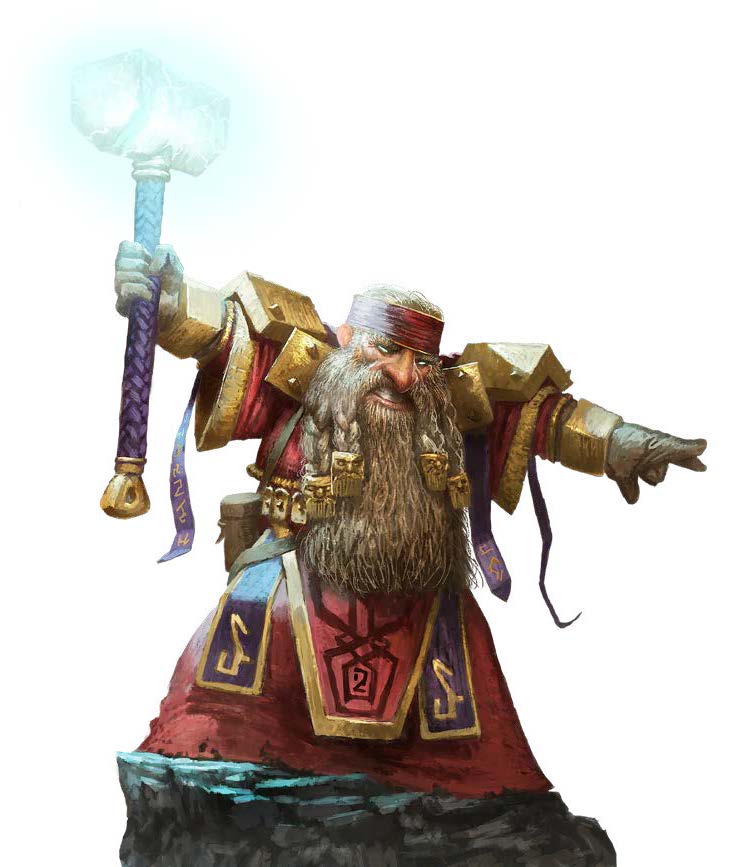
Some locations—the wizard’s tower, the sunken temple, the haunted house—appear repeatedly in stories and adventures. In this series, we’ll explore the archetypal lost temple, playing with or defying tropes, and presenting rules and ideas to bring these locales to life and to set you up for success when putting them into your game.
Adventurers Beware
The term “curse” is most often applied in terms of unfortunate magic items and nasty conditions adventurers pick up. Fifth edition still largely focuses on a curse as a sort of unique condition tag on a character.
Here, we’ll explore more the idea of cursed places with effects and implications larger than any individual or party—things usually only accomplished by confluences of divine power and hubris. It’s good foundation for any forgotten temple!
Cursed places should have a role beyond an inconvenience bypassed by a 3rd-level spell. These sorts of curses require major story arcs to resolve and are considered as intrinsic a part of the temple as its architecture. Likewise, how a temple is cursed should be tied to what adventurers might seek there, whether an item, ancient knowledge, or treasure.
Borrowing from how Van Richten’s Guide expanded curses, you can give a cursed location three major components:
- The Warning. Whenever possible, adventurers should get a warning about a curse before engaging with it, perhaps through rumors, knowledge checks, or cryptic messages scrawled on walls. The warning should hint at what the curse does and what the adventurers must not do (which ideally is something they probably have to do, or are sorely tempted to do.)
- The Trigger. This is the mechanical part. If (or when) the adventurers do the thing they shouldn’t do, what happens?
- The Resolution. How can the curse be lifted or mitigated? This usually focuses on how characters can work around the effects of a curse, as remove curse is seldom more than a palliative tactic in these instances.
Sample Curses
Using a couple of the example temples from the previous article, let’s look at how some curses might manifest. These curses are intrinsic to the place and its story. Unlike using a curse as a mechanical hindrance to a character, a cursed place is about presenting a story challenge to obtaining what the adventurers want.
The Covetous Dead
Warning. Vast wealth lies in the tombs beneath the sands. These are relics of a forgotten and powerful empire, but the will of the god-kings of old persists. They do not relinquish their treasure readily. Slow deaths await grave robbers who plunder these glittering idols and jewels. The adventurers dive in anyway, recklessly ignoring the peril. Or perhaps they have a noble purpose, like finding a necessary artifact or resisting the lure of treasure in search of an important detail about the past.
Trigger. This curse takes effect when anyone leaves the tomb with a treasure (anything valued at 1 gp or more). The next dawn, any living creature who touched the removed treasure (even if they no longer possess it) manifests scarlet marks on their hands which quickly spread to their wrists and arms. In an ancient language, these marks proclaim a thief and defiler.
Every sunset, the creature must succeed on a DC 20 Constitution saving throw or lose 1 point of Constitution as the body wastes away. This is not a disease, and spells or effects that cure disease have no effect.
The remove curse spell provides only temporary relief: The affected creature automatically succeeds on their next saving throw, but must continue to make saving throws thereafter and no lost Constitution is restored. If the victim reaches 0 Constitution, it dies.
The curse persists even if the creature gets rid of the treasure. Additionally, any other living creature who physically contacts the treasure must succeed on a DC 15 Wisdom saving throw or also fall under the curse.
Resolution. Lifting the curse requires the stolen treasure be returned to the tomb, whether by the original thieves or someone else. Returning the treasure lifts the curse for all affected, immediately ending the pain, and though the marks fade, a faint discoloration always remains. Cursed creatures no longer need to make saving throws, and they regain 1 point of lost Constitution at each dawn.
Eternal Guardians
Warning. A grouping of foreboding, monolithic stones to the far north stand above an underground barrow once belonging to a tribe of potent witches and shamans devoted to long-lost faiths.
That knowledge is still buried there. The secrets they left behind could be unearthed, but only the dead are welcome now. Nothing that dies there ever leaves, enslaved to keep the living at bay. Each new failed expedition only adds to their number.
Trigger. This curse encompasses the entire stone arrangement above ground and everything below it. Living creatures that die in its area are reanimated within 1 hour.
The undead creature a victim becomes should match the CR of the locale or the creature itself. Low-level creatures become zombies and skeletons, while more powerful creatures may turn into ghouls, wights, or even death knights.
Regardless, these newly animated undead are enslaved to the protection of the barrow and relentlessly hunt the living within, though they do not leave the boundaries of the stones. Additionally, while within these boundaries, spells such as revivify or raise dead automatically fail, as though cut off by an outside power.
Resolution. Circumventing this curse requires removing a slain creature’s body from the area before it reanimates. Otherwise, once animated as an undead, no force beyond destroying a corpse and casting wish (or equivalent) while outside of the barrow can restore the creature to life.
Ready to make your own forgotten temple adventure? The Kobold Guide to Dungeons provides deep insight on the hows and whys of dungeon design. Expert game designers like David “Zeb” Cook, Dominique Dickey, and James Sutter help make your dungeons more interesting, more challenging, and more FUN.
Get Kobold Guide to Dungeons today!
